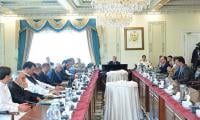Local government elections took place in 32 out of the 34 districts of Balochistan on May 29 after a delay of three and half years. Elections in two districts – Quetta and Lasbela – will take place later.
The elections were held in a relatively peaceful atmosphere and a large number of voters cast their votes, a very good sign for democracy in Balochistan. The Free and Fair election Network (Fafen) has declared the local government polls in Balochistan controversy-free, orderly and well-managed. Fafen has observed that “Balochistan completed the first phase of the local government (LG) polls to elect over 6,000 general councilors in an election that remained controversy-free followed by prompt acceptance of the results by all major political parties.
“Such an acceptance augurs well for democracy and development in the province where the integrity of electoral exercises has previously been questioned. Despite sporadic illegalities and irregularities, the elections remained largely peaceful, orderly and better-managed.”
The elections were held on 4456 seats out of 6,259 total seats on May 29 as 1,584 candidates of different political parties, independents and local groups were elected unopposed in different urban and rural wards. This means that nearly 25 per cent of the local representatives were elected unopposed; 121 candidates were elected unopposed in urban and 1,463 in rural wards.
According to the unofficial results, independent candidates have won more than 2,340 seats (53 per cent) of the seats while17 political parties combined won more than 2,100 seats (47 per cent) seats. The JUI-F has emerged as the leading political party with nearly 610 seats while the ruling Balochistan Awami Party (BAP) came second with nearly 419 seats.
The National Party (NP) got 193, PkMAP 186, PPP 168, BNP-M 158, PTI 76, BNP-A 73, GRM 60, ANP 54, PML-N 25, JWP 19, JI 16 and PSP 09 seats. The independents include several groups that were formed in different districts at the local level. These local groups emerged as the leading force in many districts. For example, the Gwadar Rights Movement (Gwadar Haq Do Tehreek) emerged as the largest group in Gwadar. It won a majority in the Gwadar Municipal Corporation. In the Qalat and Kech districts, local groups won a majority.
It is a rather alarming situation for political parties that people preferred independents and local groups over the usual political parties. One major reason seems to be the indifferent attitude of these political parties towards real issues affecting locals and the local social movements in these areas.
Grassroots movements around local issues have emerged in many districts of Balochistan but political parties have failed to address and incorporate these issues in their political campaigning. The local leadership emerged as the result of local movements, for example the Gwadar Rights Movement came into being as the result of several weeks of sit-ins and massive protest rallies.
The support for the Gwadar Rights Movement was so substantial among the general population that ordinary working class candidates defeated traditional influential candidates in the elections. Even the four-party alliance formed by major Baloch nationalist parties failed to stop the march of ordinary people towards victory.
The JUI-F has won most seats in the local bodies elections in Balochistan, after independents, and emerged as the leading political party in these elections. The JUI-F has performed well in both Baloch and Pashtun areas. The ruling BAP came second behind the JUI-F. It had won most seats in the 2018 general elections and formed a coalition government. But in these elections, it failed to maintain the support.
These results might be worrying for the BAP leadership. The party is facing a serious prospect of a split due to a power struggle between former chief minister Jam Kamal and current CM Balochistan Mir Qudoos Bizenjo who replaced Jam Kamal as CM through a vote of no-confidence.
The results clearly showed that the National Party, PkMAP and the PPP have emerged as the real winners of these local government elections2022. The PTI and PML-N are the real losers of these elections. The left-nationalist National Party (NP) led by former chief minister Dr Malik has regained a lot of the ground it lost in the 2018 general elections, having been almost wiped out then.
The Pashtun nationalist PkMAP led by Mehmood Khan Achakzai also made a strong comeback. The party had faced a shocking defeat in the 2018 elections. But it has regained the ground it lost in 2018. It seems that a triangle battle will take place between PkMAP, JUI-F and BAP in the next elections in the Pashtun belt of northern Balochistan.
The success of PPP candidates in big numbers has surprised many. The joining of some influential political figures helped the party to muster support in at least five districts. The PPP was wiped out from here in the 2013 and 2018 elections. But it is back with a bang.
The PTI has failed to perform well in Balochistan’s local government elections. Out of 32 districts, the party performed well only in Kohlu district where it won most of the seats. It seems that voters in Balochistan rejected the political narrative of the PTI. But they also seem to have disregarded the PML-N, with its 26 seats.
The writer is a freelance journalist.
People stand in line up as election officials check their ballot papers during voting general election at a polling...
Women show their voter identity cards as they stand in a queue before casting their votes in Agartala. — PTIThe 18th...
Former prime minister Imran Khan. — Instagram/ imrankhan.ptiAn old saying has it that “when you dance with the...
Kashmiris in Indian illegally occupied Kashmir protesting against the Indian occupation as the forces of India looked...
A representational image showing residents walking at a wholesale market in Karachi. — AFP/FileOnce again there is...
A representational image showing late Pakistani human rights activist and Supreme Court lawyer Asma Jahangir. —...







